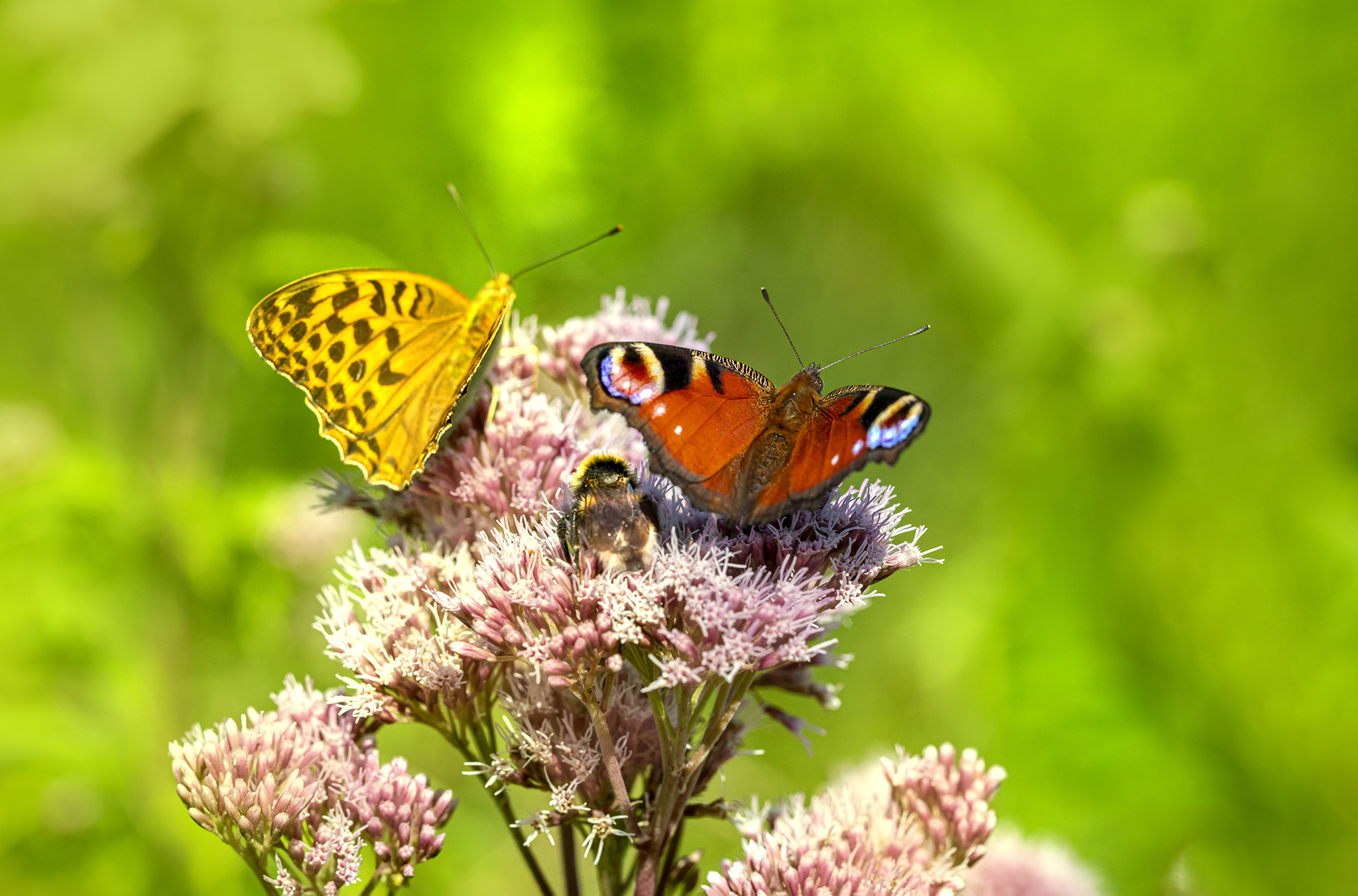That’s a fantastic butterfly! The European Peacock (Inachis io), often simply called the Peacock, is one of the most striking and easily recognized butterflies in Europe, famous for the magnificent eyespots on its wings.
Here is a deep review of its key characteristics, life cycle, and unique defensive behaviors.
🦋 European Peacock (Inachis io) Deep Review
1. Identification and Morphology
| Feature | Detail |
| Family | Nymphalidae (Brush-footed butterflies) |
| Size | Medium-to-large butterfly, with a wingspan typically ranging from 55 to 70 mm (2.2 to 2.8 inches). |
| Upperside | The wings have a rich, deep reddish-brown to chestnut ground color. Each of the four wings features a large, highly conspicuous ocellus (eyespots). |
| Eyespot Detail | The eyespots are the central feature. They are large, intricate, and multi-colored, dominated by blue and black rings, resembling the eyes on a peacock’s tail feathers (hence the name). The forewing eyespot usually features a single large, dark blue patch, while the hindwing eyespot is even larger and more complex, with shimmering metallic blue and black scales. |
| Underside | The underside is uniformly dark gray to almost black and appears rough, resembling dead leaves or burnt wood. This coloration provides superb camouflage when the butterfly rests with its wings closed. |
| Sexual Dimorphism | There is little to no difference in size or coloration between males and females. |
2. Distribution and Habitat
- Geographic Range: Widespread across temperate Europe and Asia, from the British Isles (excluding the far north) eastward through Russia and Asia Minor to Japan. It is largely absent from North Africa and the far northern regions of Scandinavia.
- Habitat Preference: Highly adaptable, found in a variety of open or semi-open environments:
- Woodland clearings and edges
- Hedges and hedgerows
- Grasslands, parks, and gardens
- River valleys
3. Life Cycle
The Peacock butterfly is typically univoltine (one generation per year) in its northern range, but sometimes partially bivoltine (two generations) in warmer southern regions.
- Adult (Overwintering): Unlike many other species that overwinter as eggs or pupae, the Peacock butterfly hibernates as an adult. Newly emerged adults in the late summer/autumn seek sheltered spots—like sheds, hollow trees, attics, or woodpiles—to spend the entire winter. They emerge in early spring (often February or March) to mate and lay eggs.
- Egg: Eggs are laid in batches (sometimes 300–500), usually on the underside of the host plant leaves.
- Larva (Caterpillar): The caterpillars are jet black and covered in fine, white dots and short, fleshy spines. They are gregarious, meaning they feed and live together in a communal web on the host plant.
- Host Plant: The caterpillars are highly specialized, feeding almost exclusively on Common Nettle (Urtica dioica), although sometimes on hops (Humulus lupulus).
- Pupa (Chrysalis): The chrysalis is pale green or brownish and hangs head-down from the host plant or nearby vegetation.
4. Behavior and Defence
The Peacock is a well-studied example of an insect using both crypsis (camouflage) and a sudden, startling defense mechanism.
Thermoregulation: The dark wings allow the butterfly to absorb solar radiation efficiently, enabling it to fly and be active earlier in the season (early spring) than many lighter-winged butterflies.
Crypsis (Camouflage): When resting with its wings closed, the dark, cryptic underside provides perfect camouflage against predators like birds or rodents, making it look like a dead leaf or bark.
Aposematism (Startle Display): If disturbed, the butterfly will instantly snap its wings open, revealing the sudden, bright, multi-colored eyespots on the upper side. This abrupt change from dull brown to vivid red and blue, combined with the perception of large, staring “eyes,” often causes a predator to flinch or hesitate, giving the butterfly a crucial window to escape.
Audible Defense: When startled, the Peacock may also rub its wings together to produce a hissing or scraping sound, adding an auditory component to its defense display, further deterring small mammals like mice.
Views: 1363
Subscribe to the newsletter:
